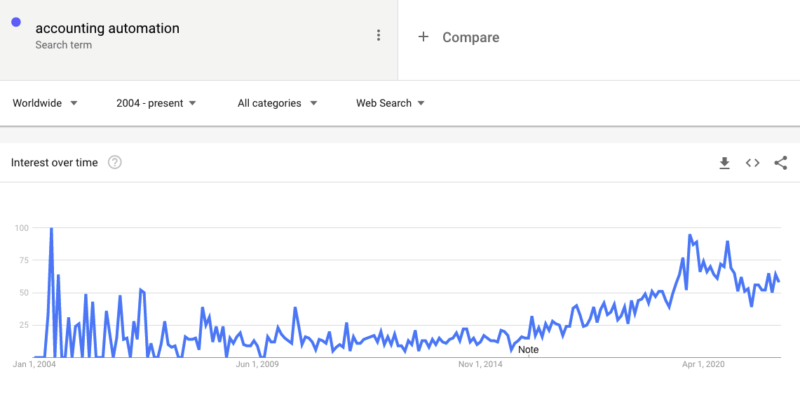Accounting tasks like data entry, reconciliation, report generation, and more can be extremely manual and time-consuming. But automation is changing the game. New technologies are enabling the automation of repetitive, routine accounting workflows to free up staff time and reduce errors.
In this post, we‘ll overview the top 5 accounting automation technologies making an impact today:
- Robotic Process Automation (RPA)
- Optical Character Recognition (OCR)
- Natural Language Processing (NLP)
- Machine Learning (ML)
- Workload Automation
For each technology, we’ll briefly explain how it works, provide examples of use cases in accounting and finance, and discuss key benefits. Read on to learn more about how leading accounting teams are leveraging automation!
1. RPA
Robotic process automation uses software "bots" to automate repetitive, rules-based tasks normally done by humans. RPA bots can interact with software systems via the GUI to complete processes like data entry or transfer.
Key accounting use cases include:
Financial Close
The financial close process of reconciling accounts and generating closing journal entries can be time-intensive when done manually. RPA bots can automate subprocesses like:
- Making recurring journal entries
- Reconciling accounts in the general ledger
- Transferring data between systems
This streamlines period close and reduces reliance on manual workarounds.
Accounts Payable
RPA shines for automating high-volume AP tasks:
- Extracting invoice data via OCR
- Entering invoices into accounting software
- Matching invoices to purchase orders
- Sending invoices for approval
- Integrating invoice data with ERP systems
Automating these steps improves AP efficiency and accuracy.
Payroll Processing
Payroll requires complex integrations between HCM systems, payroll software, tax engines, and banks. RPA bots act as the glue between these systems, moving data and executing handoffs to streamline payroll runs.
Key benefits of RPA in accounting include:
- Cutting manual workloads by 80% or more
- Improving accuracy by removing human data entry errors
- Accelerating processes through round-the-clock automation
- Freeing staff for higher value analysis work
However, RPA has limitations when processes require contextual decision making or advanced data analysis. But overall, it‘s a powerful tool for automating routine accounting workflows.
2. OCR
Optical character recognition extracts text data like amounts and vendor names from paper or PDF invoices and documents. This eliminates manual data entry from stacks of paperwork.
Invoice Processing
OCR enables "touchless" invoice processing. Key steps include:
- Scanning or uploading invoice images/PDFs
- Using OCR to identify and extract header and line item data
- Validating extracted data
- Exporting structured data to accounting software
This reduces invoice processing costs by up to 80% while accelerating approval and payment.
3. NLP
Natural language processing (NLP) analyzes text to extract meaning, classify documents, and automate communication.
Prioritizing Communications
Accounting teams get bombarded with emails, chats, and calls daily. NLP can analyze message content and automatically label items as high/medium/low priority so staff know what requires urgent attention.
It can also auto-respond to common vendor and customer inquiries, eliminating grunt work. This ensures critical communications get proper attention.
4. ML
Machine learning algorithms uncover patterns from data to make predictions or recommendations. Unlike rules-based programming, ML models self-improve by learning from new experiences over time.
Cash Flow Forecasting
Historical cash flow data can train ML models to forecast future cash positions. The models can factor trends, seasonality, and other variables to become more accurate with more data.
This provides vital visibility into future cash requirements for accounting teams. Models can also forecast AR, AP, and more.
5. Workload Automation
Workload automation (WLA) tools schedule and orchestrate tasks across applications and systems. This coordinates end-to-end processes spanning multiple steps.
Record-to-Report
The record-to-report (R2R) cycle has many moving parts that must happen in sequence:
- Transaction processing
- Journal entries
- Reconciliation
- Consolidation
- Report generation
WLA software integrates these subprocesses into automated, scheduled workflows. This reduces month-end fire drills.
- Look for repetitive, high-volume tasks that can be automated to free up staff time. Focus there first.
- Ensure proper training so staff understand the technologies and can handle exceptions.
- Start small with a pilot. Measure results and expand automation to other processes.
- Technology alone isn‘t the answer. Optimizing processes first will maximize automation benefits.
Automation enables accounting teams to focus on high-value analysis and strategic initiatives rather than data grunt work. Leveraging the right technologies also boosts productivity, accuracy, and visibility.
While these technologies require upfront investment, the long-term efficiency gains and labor cost reductions are substantial. Get ahead of the curve by scoping where automation can augment your team.

